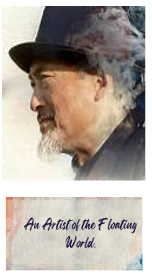An Artist of the floating word worksheet

Worksheet-3: Exploring "An Artist of the Floating World" This blog is part of the Thinking activity task of the worksheet of The Artist of the Floating World. 1.Identify instances in the transcript where Masuji Ono addresses the reader as "you." What effect does this narrative technique have on the reader's engagement with the text? How does it contribute to the characterization of Masuji Ono as an unreliable narrator? In the novel "An Artist of the Floating World," Kazuo Ishiguro uses a clever storytelling technique where the main character, Masuji Ono, talks directly to the reader as if they're having a conversation. This makes readers feel like they're right there with Ono, listening to his thoughts and memories firsthand. By doing this, Ishiguro makes Ono feel more relatable and draws readers into his world. But there's a twist: Ono isn't always truthful. Sometimes he tries to make himself look better or justify his actions, which...

